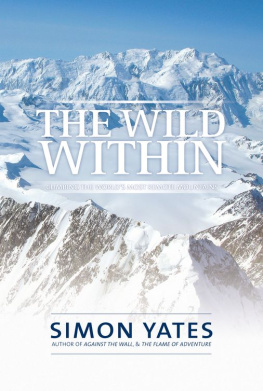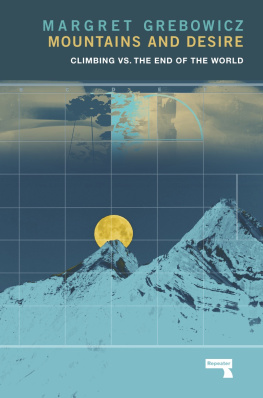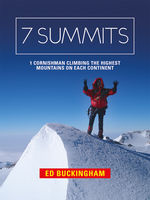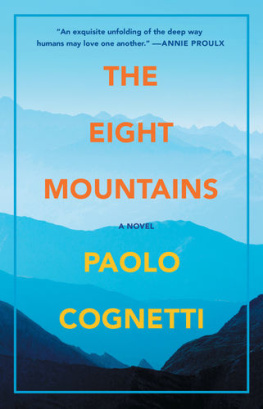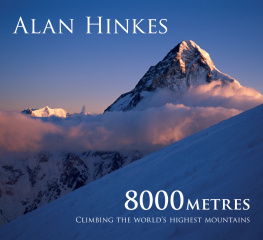Simon Yates - The Wild Within: Climbing The World’s Most Remote Mountains
Here you can read online Simon Yates - The Wild Within: Climbing The World’s Most Remote Mountains full text of the book (entire story) in english for free. Download pdf and epub, get meaning, cover and reviews about this ebook. year: 2012, publisher: Vertebrate Graphics Ltd, genre: Non-fiction / History. Description of the work, (preface) as well as reviews are available. Best literature library LitArk.com created for fans of good reading and offers a wide selection of genres:
Romance novel
Science fiction
Adventure
Detective
Science
History
Home and family
Prose
Art
Politics
Computer
Non-fiction
Religion
Business
Children
Humor
Choose a favorite category and find really read worthwhile books. Enjoy immersion in the world of imagination, feel the emotions of the characters or learn something new for yourself, make an fascinating discovery.
- Book:The Wild Within: Climbing The World’s Most Remote Mountains
- Author:
- Publisher:Vertebrate Graphics Ltd
- Genre:
- Year:2012
- Rating:3 / 5
- Favourites:Add to favourites
- Your mark:
- 60
- 1
- 2
- 3
- 4
- 5
The Wild Within: Climbing The World’s Most Remote Mountains: summary, description and annotation
We offer to read an annotation, description, summary or preface (depends on what the author of the book "The Wild Within: Climbing The World’s Most Remote Mountains" wrote himself). If you haven't found the necessary information about the book — write in the comments, we will try to find it.
The Wild Within: Climbing The World’s Most Remote Mountains — read online for free the complete book (whole text) full work
Below is the text of the book, divided by pages. System saving the place of the last page read, allows you to conveniently read the book "The Wild Within: Climbing The World’s Most Remote Mountains" online for free, without having to search again every time where you left off. Put a bookmark, and you can go to the page where you finished reading at any time.
Font size:
Interval:
Bookmark:
F OR J ANE, M AISY & L EWIS
Thousands of tired, nerve-shaken, over-civilised people are beginning to find out that going to the mountains is going home; that wildness is a necessity; and that mountain parks and reservations are useful not only as fountains of timber and irrigating rivers, but as fountains of life.
JOHN MUIR, OUR NATIONAL PARKS
Stumbling from one snow-covered rock to another, I silently cursed as yet another football-sized lump slid from under my foot and I fell heavily on to the slope. The scree I had been scrambling up for more than an hour would have been challenging enough in the dry, but with its present coating of heavy, wet snow it was positively dangerous. Occasionally, I was reduced to pedalling motions with my hands and feet, as if fighting my way up an icy escalator the down one. A relentless westerly gusting across the slope made the job even harder, driving the snow with such ferocity it stung my face. Yet despite the discomfort I was enjoying the exercise after days of inactivity forced upon us by bad weather.
The day had started easily enough, picking berries as we wandered through sheltered forest below the mountains. Soon enough the obstacles began. Faint trails petered out and tangles of dense undergrowth and fallen trees sent us on lengthy diversions. Huge moss-covered trunks toppled by mighty blasts off the southern oceans had to be scrambled over, timber-choked streambeds forded and steep banks climbed by clinging to tree roots and tussocks of grass. Time passed quickly in such terrain, but progress was slow. What had looked like a gentle stroll from below was clearly going to be a long and demanding day. This was not the manicured woodland of England, but a forest of nothofagus, the native beech that blankets large swathes of southern Chile, Argentina and New Zealand.
Higher up we had to wade through peat bog and skirt around beaver dam lakes; close to the tree line the remaining forest became bush-sized and maddeningly dense. It had been a relief to reach the slope of snow-covered grass above the stunted trees, but then came the scree I was now struggling up.
Gradually the fan of slippery stones narrowed to a couloir that appeared to provide an approach to our chosen summit. We were simply following a line of weakness up the mountain, as we had tried to do in the forest below. The scree finished abruptly at a short, steep buttress that guarded the way to the top. I contoured leftwards along a rake towards a small col about 50 metres away. It was easier to be moving almost horizontally with the wind at my back, but the ground dropped steeply away at my feet and I moved cautiously.
The col brought relief from the tension of the rake and exertion on the slopes below. It was not, however, a sheltered spot. The wind gusted unpredictably through the shallow notch and I had to hold tight to the rock above before peering round the corner. An up draught smacked into my face. Beyond lay steep cliffs and ice-encrusted rock. I had hoped the col would reveal an easier way to the top. It did not. Crampons, ice-axes and a rope would be required to climb the ground above, and we had not brought them with us. This windy spot would mark the highpoint of our days explorations.
Having stopped moving, my body soon chilled. I put on an extra jacket, swapped my thin inner gloves for fleece-lined over-mitts, and huddled against the rock to wait for the others.
Now I could fully appreciate the surrounding terrain. The view was striking in its desolation, an elemental landscape of storm cloud, snow-covered mountains, dark forest, lakes, rivers and sea. Shafts of sunlight cut through the cloud and picked out white horses in the Beagle Channel, which separated us on Isla Hoste from the mainland of Tierra del Fuego to the north. Yet for all the marvellous view my thoughts kept turning to the snowline. Here in the height of the southern summer it was down to 100 metres above sea level. Normally at this time of the year it would be at least a 1000 metres higher.
A chance set of circumstances had led to my first visit to Tierra del Fuego back in 2001. Before then I thought of it as an almost mythical land, linked with the names of Charles Darwin, Robert FitzRoy, captain of HMS Beagle, and the missionary Thomas Bridges whose son Lucas fashioned their family history and closeness with the Fuegian Indians into a remarkable book, The Uttermost Part of the Earth. And then there was the legendary Eric Shipton who spent the twilight of his long career as a mountaineer-explorer pioneering in the Cordillera Darwin, the largest range of peaks in this archipelago of mountainous islands. The reality of that initial visit exceeded my wildest expectations; these storm-racked islands captured my imagination and I would return again and again.
I had realised many years earlier that I climbed mountains because I relished the physical and mental challenge in that particular extreme environment. I felt I was re-connecting with the natural world a world distanced from most of us in developed countries by our wealth, material comfort and the fact that we no longer need to engage with nature for a livelihood. Part of the lure was also one of escapism: life is simpler in the mountains.
After serving an apprenticeship on crags throughout England and North Wales, I graduated to winter mountaineering in Scotland, upping the ante on towering cliffs cloaked with snow and ice. This in turn led me to the European Alps, climbing routes of such difficulty and height they would sometimes take several days to complete. Next came exploratory alpinism on mountains or huge faces that had never been climbed before. Yet though, in retrospect, the path seems predetermined, when I went to Peru in 1985 with Joe Simpson and made the first ascent of Siula Grandes West Face, I had no idea it would be the start of what looks like being a life-long calling. I moved on to the Karakoram, Himalaya, more visits to the Andes and to the mountains of Central Asia. But they would not be the end of my restless search.
Despite the remoteness of these mountainous regions, all have to some extent been shaped by people who have lived among them for centuries, sometimes millennia, marks of their presence extending far above the highest hamlets and summer camps. During nearly 30 years of exploration I have witnessed rapid change. Roads have been built to previously remote mountain villages, bringing commerce, electricity, schools and hospitals. Better infrastructure soon opened these areas to outsiders people like myself. At first only a handful of adventurous climbers and trekkers penetrated deep into the mountains, but word spread and more general tourists quickly followed. Small towns grew to the size of cities and villages became towns.
I had been lucky to travel and climb in such places, and perhaps to experience them in quieter times. However passion and ambition was driving me on. I began to look at mountains beyond the margins of human habitation, increasingly appreciative of physical isolation and the commitment of climbing with just a single partner. Then the world changed again. As with road building, the communication revolution came late to the mountains but quickly gathered pace. Without really noticing how it had happened, I found myself entering these special places with computers and phones, and the lines between my mountain time, work and home became increasingly blurred.

The sound of sliding stones dislodged me from my thoughts. Andy Parkin, my friend and climbing partner, was nearing the col; Marcel de Letter, a likeable Belgian who we had met for the first time just a few days earlier, was not far below him.
Font size:
Interval:
Bookmark:
Similar books «The Wild Within: Climbing The World’s Most Remote Mountains»
Look at similar books to The Wild Within: Climbing The World’s Most Remote Mountains. We have selected literature similar in name and meaning in the hope of providing readers with more options to find new, interesting, not yet read works.
Discussion, reviews of the book The Wild Within: Climbing The World’s Most Remote Mountains and just readers' own opinions. Leave your comments, write what you think about the work, its meaning or the main characters. Specify what exactly you liked and what you didn't like, and why you think so.

